Modern Fantasy - description of story elements and quality characteristics
Introduction
Overview
- Introduction
- Monsters
- Quality characteristics of modern fantasy by story elements
- Attributes of modern fantasy to enhance discussion, creativity, & productive thought
- Modern fantasy attributes defined
- Sample search for modern fantasy attributes in Green Angel
- Little Red Riding hood - Contrast of traditional and modern - toolbox
The page includes an analysis of the genre modern fantasy, including science fiction, with the use of elements of story and their characteristics. It describes what makes modern fantasy quality. It also includes attributes of modern fantasy to enhance discussion, creativity, & productive thought, derived from Frank E. Williams three dimensional model for teaching productive divergent thinking. With and example of a completed worksheet for Green Angel by Alice Hoffman. And compares Little Red Riding hood as traditional and modern fantasy.
Background about monsters in fantasy
Literature is full of monsters, most of our own making. Throughout history humans have created supernatural beings from species, such as bears and wolves, and have made these otherworld creatures more dangerous. We have imagined vindicative gods out of volcanoes, earthquakes, and super storms. And even more often dehumanized fellow humans by naming, shaming, and blaming others by turning them into something monstrous.
Monsters: witches, werewolf, vampire, ogres, bogeyman, dwarfs, golems, cyclops, ogre, phoenix, leprechauns, gnomes, goblin, ghosts, ghasts, nymphs, fairies, sprites, Medusa, mermaid, minotaur, centaur, satyrs, fauns, griffin, basilisk, unicorn, dragon, Bigfoot, yeti, chimera, hydra, zombies.
Monster literacy should provide a deeper understanding as to the fictional nature of our monsters and why we are so drawn to their stories.
We need a deeper understanding of why humanity clutches its greatest fears close might help us flex our imaginations and build some immunity against the demagogues and xenophobes who invoke monsters to try to rile up a mob. ... Think of it as a kind of species-level civics education.
In early literature, animals and monsters are used in stories as teaching tools, offering examples of what not to do, often manifestations of threats posed by supernatural and diabolical demons and devils that serve as metaphors for the evil humans face and sometimes inflict on one another.
Dragons in these setting are cast as big and powerful enemies of all humankind to test the strength of our would be leaders. An enemy worthy enough for which other characters can be tested to show they have the character of true heroes and worthy enough to be our political or religious leaders: kings or saints.
Collections of texts from the ancient, medieval and early modern worlds, describe how people from the past thought about these things in ways that we do not today.
Resources
- Penguin Book of Dragons, by Scott Bruce,
- The Penguin Book of the Undead, by Scott Bruce, and
- The Penguin Book of Hell, by Scott Bruce.
Quality characteristics of modern fantasy by story elements
Characterization
- Characters can have special powers.
- Animals act like people (anthropomorphism).
Setting
- Place is imaginary or of another world or universe.
- Time is anytime or no time.
- Fantasy time (Once upon a time sets the stage and They lived happily ever after closes the tale.) any time or any place, timeless or placeless, or long long ago.
- Time travel is possible.
Plot
- Varied, but usually surprising twists or developments.
- Involving situations not possible in our realistic world.
- Full of action and follows specific and simple patterns.
- The plot starts right out with fast moving action that grabs the listeners interest and keeps it.
- Conflicts are usually resolved with great deeds or acts of human kindness related to good and bad/evil.
Theme
- Good versus bad or evil.
- Uses magic or other ideas to achieve the extremely impossible.
- Problems of young adults
- Security
- Fear of leaving home
- Fear of not having children
- Fear of not being loved or giving love
- Reflect basic values and concerns of different cultures
- Good and evil
- Right and wrong
- Justice and injustice
- Happiness, kindness, friendship, loyalty
- Good triumphant over evil
- Love and loyalty
- Love and loyalty can transform ...
- Discuss basic values of people.
Style
- Use of magic or possibly powers that have no scientific bases yet verified by repeatable evidence.
- Use of mental powers or technologies that are not possible or not yet discovered.
Tone
- Feel that in a magical world the story is plausible.
- Despite the availability of magic the struggle of the characters seems authentic and failure an option.
Point of View
- Could be any. Often third person narrative.
Attributes of modern fantasy to enhance discussion, creativity, & productive thought
Frank E. Williams model of productive thought source
It is a three dimensional model:
- Dimension 1 - includes subjects (art, music, science, language, math, social sciences)
- Dimension 2 - includes 23 classroom teaching strategies (paradoxes, analogies, sensing deficiencies, thinking of possibles. provocative questions, attribute listing, exploring mystery of things, reinforcing originality, examples of change, organized random search, examples of habit, skills of search, tolerance for ambiguity, intuitive expression, process of invention, adjustment to development, study creative people, interact with past knowledge, evaluate situations, receptive to surprise, creative reading skill, creative listening skill, & visualization skill)
- Dimension 3 - includes productive-divergent thinking processes (fluency flexibility, elaboration, originality, curiosity, risk taking, complexity)
Ideas from the model can be used to identify discussion topics to facilitate the enhancement of learners' cognitive, creative, and affective abilities with respect to their ability and desire to seek creative experiences. The better learners are able to understand these ideas, the greater their comprehension and appreciation of quality literature. Science fiction and modern fantasy are two excellent genres to provide these types of cognitive, creative, and affective growth.
Learners can select a piece of modern literature (Green Angel) and identify examples for the following, inspired by Williams' model. Give it a try and you may be surprised at how modern fantasy and science fiction include so many ideas related to these attributes and are more easy to identify than one thinks before doing the activity.
Enjoy!
Modern Fantasy Attributes Defined
- Paradox - the author's and characters' actions or ideas seems to be contradictory but may be true or have some sensibility.
- Attribute/quality/characteristic of a person or thing that is distinctive for the character, setting, plot...
- Analogy - a logical link between two similar events or ideas with the purpose of providing understanding.
- Discrepancy - inconsistency between facts, actions, thoughts...
- Provocative questions - question that causes deep thinking or problem solving to resolve (causes cognitive dissonance or disequilibration).
- Examples of change - change is used to contrast different characters, their abilities, their abilities to adapt and change to changes in plot, characters, or setting.
- Example of habit - a habit is a constant, often unconscious performance of an act acquired through frequent repetition. Habits are usually employed as a device for failure, or if overcome or changed, for success.
- Organized random search - characters in modern fantasies are often in search of something. A quest for self improvement, achievement of a personal goal, finding an artifact, person, ...
- Skills of search - development of a method for finding information; could be trial and error, guided by a supernatural force, historical knowledge, wit and wisdom, or other superior abilities to discover.
- Tolerance for ambiguity - characters often seem to thrive in unexpected and open-ended situations or the author tolerates ambiguity as an element of style or tone.
- Intuitive expression - characters are adept at making guesses and acting on hunches or emotions.
- Adjustment to development - characters are able to adjust to situations that previous characters, or they, have not been able to do successfully before the start of the story.
- Study creative people and processes - characters may be able to act creatively, but often learn to be more creative or create new and unique processes.
- Evaluate situations - situations are described in detail from different points of view and perspectives described by the author and / or characters along with different inferences and a wide variety of possible consequences.
- Creative reading skills - Written in a manner that helps develop reading skills and abilities. Requires and facilitates a different way of reading or reading comprehension due to the writing style, tone, plot or other device.
- Creative listening skills - The writing style, tone and plot encourage the development of listening skills.
- Creative writing model - Written in a manner that skillfully and creatively models the use of story elements and quality literature, which can facilitate the development of writing skills and abilities.
- Visualization - written in a manner that provides opportunities to visualize characters, settings, and situations that are not ordinarily observable.
Search for modern fantasy attributes
Piece of literature -
1. Paradox -
2. Attribute/quality/characteristic -
3. Analogy -
4. Discrepancy -
5. Provocative questions -
6. Examples of change -
7. Example of habit -
8. Organized random search -
9. Skills of search -
10. Tolerance for ambiguity -
11. Intuitive expression -
12. Adjustment to development -
13. Study creative people and processes -
14. Evaluate situations -
15. Creative reading skills -
16. Creative listening skills -
17. Creative writing model -
18 Visualization -
Search for modern fantasy attributes
 Piece of literature - Green Angel by Alice Hoffman
Piece of literature - Green Angel by Alice Hoffman
- Paradox: Green tattoos herself using ink and pins to control her pain and sorrow. Changes her appearance and personality to hide her pain, but tattoos herself to show the pain and suffering.
- Attribute: Green's ability to hear the wind, know nature's next move, .
- Analogy: Green changing her name to Ash, how that represents her family died in a fire. How her name as she her self change after the tragedy, 9/11 and other historical disaster. Changes to world similar to changes in Green.
- Discrepancy: One minute Green is happy with her family and her garden, next minute it is gone. She is filled with anger and sorrow and dreams of her sister, then looses the sight of her sister in her dreams. Different thoughts, thinking, attitudes, personalities are different with her changes
- Provocative questions: How would anyone survive after such a disaster? Would anyone want to survive? Why is she still alive? How would you react to a situation like Green's? Why isn't Green becoming one of the people who lived in the Forgotten Shack? How did the Grey Hound, Onion, and the Hawk provide hope for Green in the end?
- Examples of change: Green changed dramatically, regular Green in beginning, changed to Ash; short hair, tattoos, hopeless, and spikes; but then back into Green with a new sense of understanding and a new beginning.
- Example of habit: Gardening, tattooing herself, bringing rocks to represent her family to a tree until she turned 16.
- Organized random search: In her dreams. Green searched for her sister Aurora and her hair as bright as the moonlight. She began to fade, but in the end came back, but as the young Aurora, not Green's twin anymore. Green’s search for answers and happiness.
- Skills of search: Search for food and other things to survive. Search for other people. Search for happiness.
- Tolerance for ambiguity: Going from day to day not knowing what was going to happen. She used what she had at hand and did what she could to make it.
- Intuitive expression: Green used her ability to read the wind and nature to tell her next move and help her survive. When the neighbor regularly asked Ash what her name was. Knowing it would eventually return to Green.
- Adjustment to development: Green was able to stay away from the Forgotten Shack and dancing around the fire all night to forget her family like Heather and the other children did. Instead she made it through by finding hope from others and within herself.
- Study creative people and processes: Green learning how to survive, find others, and happiness. Use of ink and pins to make tattoos on herself as an outlet for her pain and sorrow. Green’s study of Diamond, Heather, and the others.
- Evaluate situations: The difference between how Green, Diamond, Heather and others handled the.
- Creative reading skill: The tone of Green Angel is dark and gloomy at times and then at other is has hope and brightness.
- Creative listening skill: Trying to relate to Green and her situation is difficult and hard to do, so
listening to her story is important, but not a problem. The fact that the reader feels incredibly sorry for Green and would never want to be in her situation is a great hook to make the reader listen. - Creative writing skill: Green Angel is written very well and everything is extremely descriptive
and paints a great picture in the readers mind. Many uses of metaphor and symbolism. - Visualization skill: A vivid image of Green before and after is very apparent in one's mind. The thorns and tattoos all over her body is almost frightening.
Red riding hood ... tool box
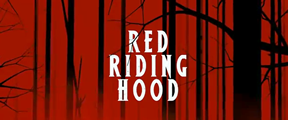
Versions of Little Red Riding hood
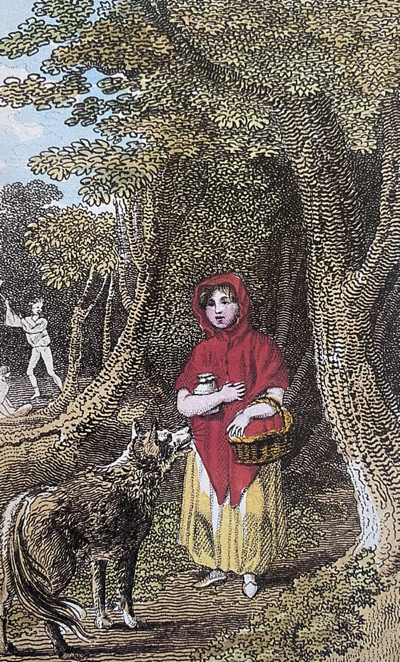
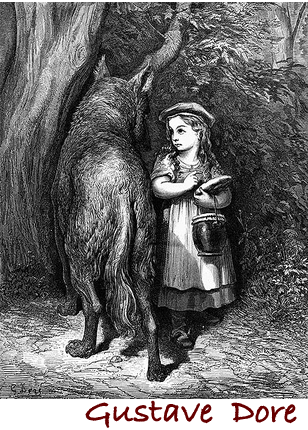
Illustration from Charles Perrault
Little Red Riding hood by Gustave Dore
1697
- Oral origin of - Little Red Riding hood?
- Perrault Little Red Riding Hood
- Perrault Little Red Riding Hood - in French
- Comparison chart Little (Red) (Cap, Cape, Riding hood...)
- Monster - Lady Gaga and Redone- A Red Riding Hood Tale
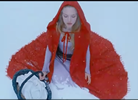
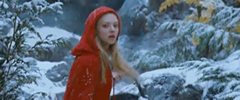
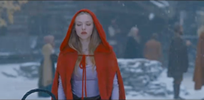
Even teacher magazines reference Little Red ...
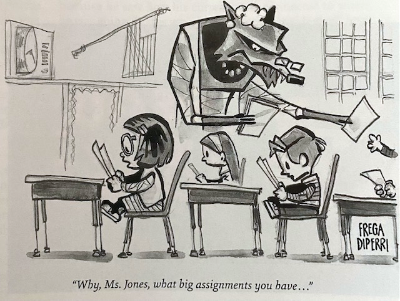
Home: Literacy, media, literature, children's literature, & language arts